Comprehensive Guide to Red and Purple Cannabis Stems: Causes, Solutions, and When to Worry
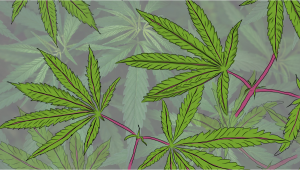
- 1. Introduction
- 2. Natural causes of red and purple stems
- 2. a. Plant maturity
- 2. b. Genetics
- 3. Environmental factors contributing to red and purple stems
- 3. a. Temperature fluctuations
- 3. b. Lighting
- 4. Nutrient deficiencies and imbalances
- 4. a. Phosphorus deficiency
- 4. b. Magnesium deficiency
- 4. c. Potassium deficiency
- 4. d. Calcium deficiency
- 4. e. Other nutrient deficiencies and imbalances
- 5. Signs of pests and diseases
- 5. a. Pest infestations
- 5. b. Bacterial diseases
- 6. When to worry about red and purple stems
- 7. Effective solutions for red and purple stems
- 7. a. Monitor and adjust environmental conditions
- 7. b. Use a balanced nutrient solution
- 7. c. Monitor ph levels
- 7. d. Practice integrated pest management (ipm)
- 7. e. Maintain a clean grow space
- 8. Strengthening your plants' immune system
- 8. a. Boost beneficial microorganisms
- 8. b. Use silicon supplements
- 8. c. Provide optimal lighting
- 8. d. Enhance air circulation
- 9. Recognizing and addressing genetic factors
- 9. a. Research your strain
- 9. b. Observe plant growth and health
- 9. c. Consult experienced growers
- 10. Conclusion
1. Introduction
Growing cannabis seeds can be both an art and a science and encountering red or purple stems can be a common yet puzzling occurrence. In this expanded comprehensive guide, we will delve into the various reasons behind red and purple cannabis stems, offer practical solutions, and help you determine when it's time to worry.
2. Natural Causes of Red and Purple Stems
Plant Maturity
As cannabis plants mature, it's normal for them to develop reddish or purplish hues on their stems. This coloration can be particularly noticeable during the flowering stage when plants focus their energy on producing buds. In this case, red or purple stems are a sign of healthy plant development and not a cause for concern.
Genetics
Genetics also play an important role in the color of the stems. The pigment anthocyanin is the reason you’ll notice the purple and red nuances on the stems. Moreover, there are strains that naturally have more pigment in their genetics so you should expect to see the colors changing.
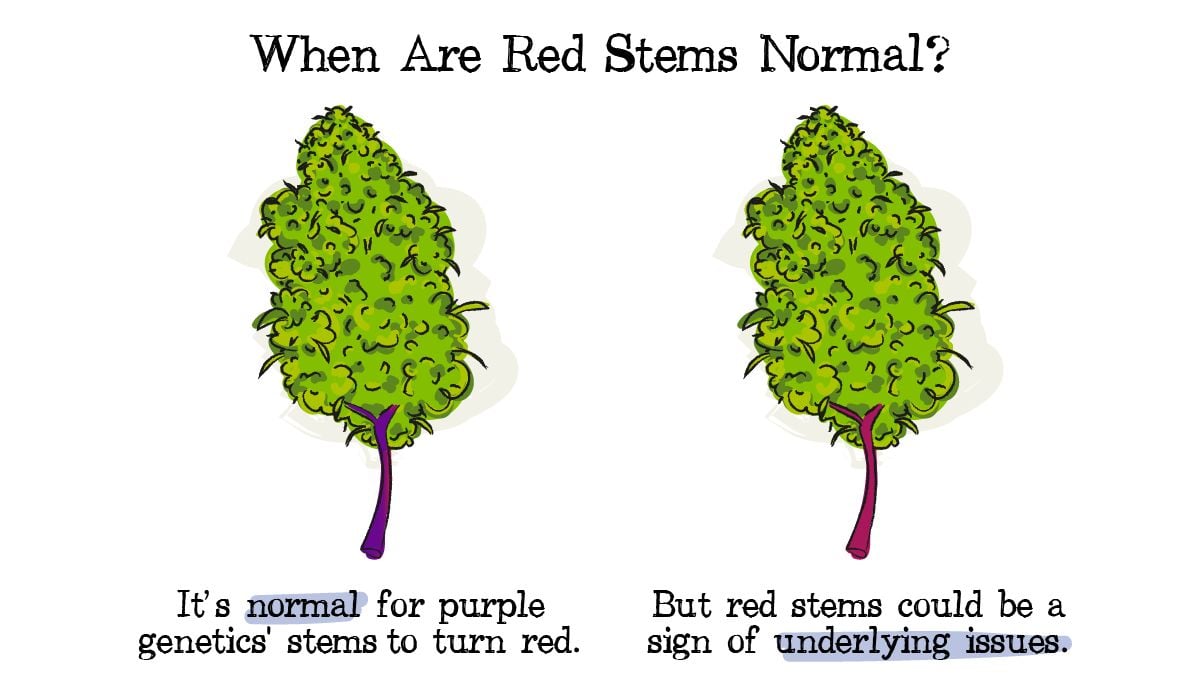
It’s even more obvious in strains like Purple Haze, Blueberry and Grandaddy Purple. But it’d be best if you check the characteristics of the strains you’re interested in. This way, you’ll know if it’s normal to see your cannabis stems catching some color.
3. Environmental Factors Contributing to Red and Purple Stems
Temperature Fluctuations
Besides the genetic predisposition to getting a red or purple stem, the temperature fluctuations can also impact the stems. So get into the habit of checking the temperature of the grow space because you need to keep it constant to avoid stressing the plant.
Most growers would recommend temperatures not higher than 29 degrees Celsius during the day, or 70 degrees Fahrenheit. During the night it’s another story, because your cannabis plants can survive when it’s colder, something around 15 to 21 degrees Celsius or 70 to 85 degrees Fahrenheit.
Lighting
Now, moving on to the importance and the effects of good lighting in your growing room. The main point is that excess, whether it’s too much or too little, has a bad influence on the way your cannabis grows. When the light gets too strong, the weed plants will start getting darker or catching some color to protect itself from the UV rays.
Each stage of development of your marijuana plant requires a specific spectrum of light that will help it grow. For example, during the vegetation stage many growers go for blue-spectrum lights, while for the flowering stage it’s recommended red-spectrum.
You’ll need to put LEDs or HPS lights farther away from your cannabis because they’re much more powerful than others. But if you think CFL would fit better to your space, then you have nothing to worry about because these lights are much weaker.
The next thing you’ll have to take care of is the light schedule of your marijuana plants. Don’t forget that not all strains are the same so if autoflowers handle light much easier and are more forgiving, we can’t say the same about photoperiods. So, to be on the safe side, keep your weed under the light for 18 hours when it’s in the vegetative stage and for 12 hours when flowering.
4. Nutrient Deficiencies and Imbalances
Phosphorus Deficiency
Whenever we talk about nutrients, we also mention a pH meter because it’s the most useful tool you could use to see if there’s something missing at a nutritional level. In case of insufficient phosphorus, the stems might change color as a protection mechanism. The meter will also make sure the medium (6.0 - 7.0 pH soil or 5.5 - 6.5 hydroponics) can absorb the nutrients better.
Magnesium Deficiency
If your cannabis is dealing with lack of sufficient magnesium then you might have to encounter issues in photosynthesis and energy production. You can resolve this by adding a bit of Epsom salt or magnesium to your feed water and check the pH to see if there are any changes.

Like all the other main macronutrients, potassium is essential in the growing process of your weed. If you don’t add enough potassium to the feed water, then not only will your stems start turning red or purple, but also the leaves will start curling and your buds won’t grow as much as they should.
Potassium Deficiency
Like all the other main macronutrients, potassium is essential in the growing process of your weed. If you don’t add enough potassium to the feed water, then not only will your stems start turning red or purple, but also the leaves will start curling and your buds won’t grow as much as they should.
Calcium Deficiency
Lack of calcium has the same impact on the stems as any other nutrient shortcoming. Not only that, but it can devolve into worse problems like rot and slowed growth. Add more nutrients with a higher content of calcium to get your weed back on track.
Other Nutrient Deficiencies and Imbalances
Micronutrients such as nitrogen, sulfur or zinc are very important and not adding enough will get your stems colored. Jump over these possibilities by always checking the growing medium for any types of deficiencies.
5. Signs of Pests and Diseases
Pest Infestations
If your cannabis plant gets too stressed, then you’ll have to deal with diseases and pests infestations. Moreover, these harmful factors not only affect the red and purple branches, but also will impact the way your weed absorbs the nutrients and how it grows.
The best way to deal with these issues is by following IPM strategies like doing regular checks, adding barriers and traps for the insects and using neem oil, insecticidal soap or diatomaceous earth. Also, don’t sleep on using beneficial insects to keep in check the harmful ones.
Bacterial Diseases
Bacterial blight, leaf sport and cankers are some of the diseases that can get your cannabis plants might get along with the colorful stems. When taking care of your garden, you need to be aware of the methods you can use to prevent the disease.
So, besides keeping the space clean and doing your daily check-ins to your cannabis plants, here’s what else you can do:
- Avoid overwatering your cannabis roots so you don’t create an environment that promotes bacterial growth.
- In case you have an infected plant, remove it as soon as possible from the grow space.
- Use copper-based products and bactericides to treat your infected weed plants.
6. When to Worry About Red and Purple Stems
If your stains get red or purple stems naturally, then you have nothing to worry about. However, if the colorful stems are also accompanied by other signs of deficiencies or pests infestations, then it’s not a good sign.
The moment something unusual catches your eye, act fast and deal with the issue quickly because you don’t want the infections or the pests to reach your other marijuana plants.
7. Effective Solutions for Red and Purple Stems
Monitor and Adjust Environmental Conditions
Regularly checking on your plants ensures that you’re on track preventing any possible diseases and infestations. By making sure you keep in check the temperature, lighting, humidity and ventilation, so you can adjust them based on the needs of the cannabis plants.
Use a Balanced Nutrient Solution
Your weed needs a balanced amount of nutrients to thrive and to combat any harmful external factors. But don’t forget that you’ll need to adjust the quantities and the type of nutrients based on the growing stage.
Monitor pH Levels
Reading the pH levels gives you a good understanding of your plant’s needs, as such, keeping track of it will allow you to make adjustments as needed. Use the meter on both the growing soil and the feeding water for an accurate reading.
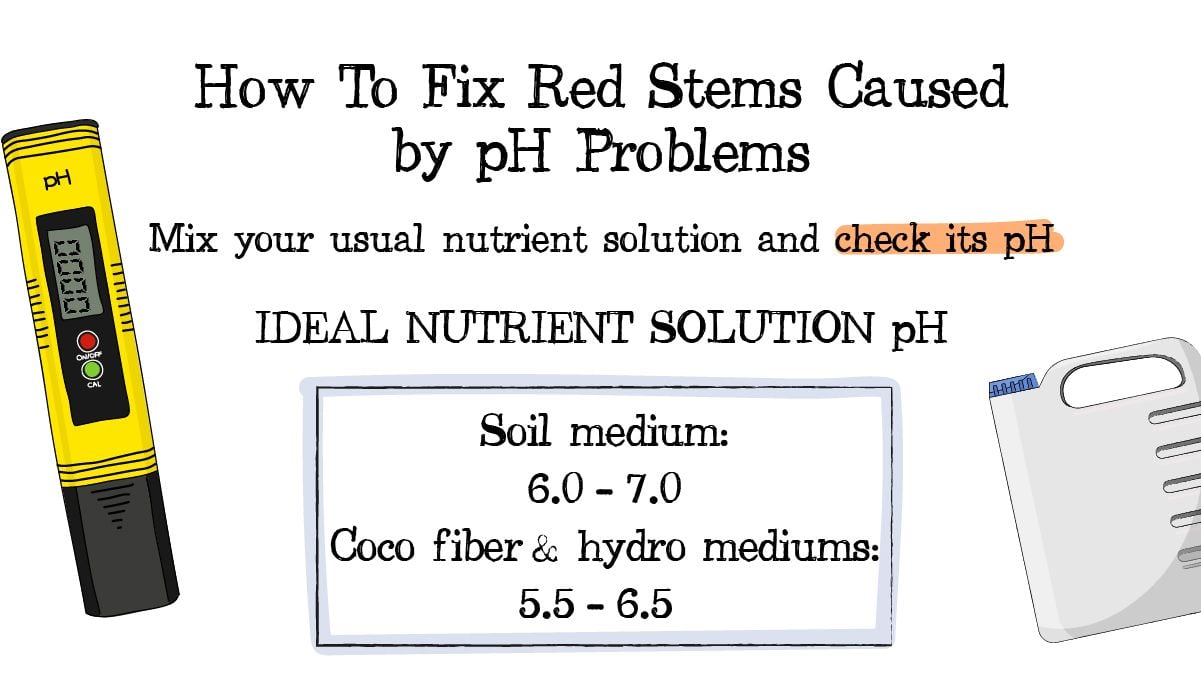
Practice Integrated Pest Management (IPM)
Physical barriers and beneficial insects will help protect your cannabis plants from getting infested or catching a disease. IPM is basically a system of strategies that will help prevent these types of issues.
Maintain a Clean Grow Space
A clean growing space will lower the chances of diseases as well pests. Don’t forget to sanitize your tools and to keep the ventilation system working in pristine conditions.
8. Strengthening Your Plants' Immune System
Yes, cannabis plants have an immune system. In fact, you can even help strengthen it by using some techniques and tools to help your plants thrive and combat any possible issues.
Boost Beneficial Microorganisms
Microorganisms can be both beneficial and harmful so picking the right ones is important for your cannabis culture. Mycorrhizal fungi and compost tea can fight against pathogens and help with the health of the roots. Just add them to your feeding water or directly in the growing medium.
Use Silicon Supplements
Thanks to silicon, pathogens and other pests can’t get into the strengthened cell walls of the plant as easily so it’s a great choice for improved protection. Moreover, your plant’s absorption capacity will be improved.
Provide Optimal Lighting
A well set lighting schedule promotes photosynthesis and growth so your plant has the best chances of thriving. Using the ideal light intensity gives you high yields and will also prevent the development of diseases.
Enhance Air Circulation
If your growing room doesn’t have a good air circulation system, then your plants are prone to humidity-related issues. To avoid these issues, add an oscillating fan so your cannabis receives enough air.
9. Recognizing and Addressing Genetic Factors
Pigments like anthocyanins are the reason why some cannabis plants develop red or purple steams naturally. So, to be sure if your cannabis plants are in this category and not suffering from deficiencies, then let’s check how to know:
Research Your Strain
Don’t hesitate to do some research about your strain. This will give good info about its preferred light schedule, feedings and yield potential.
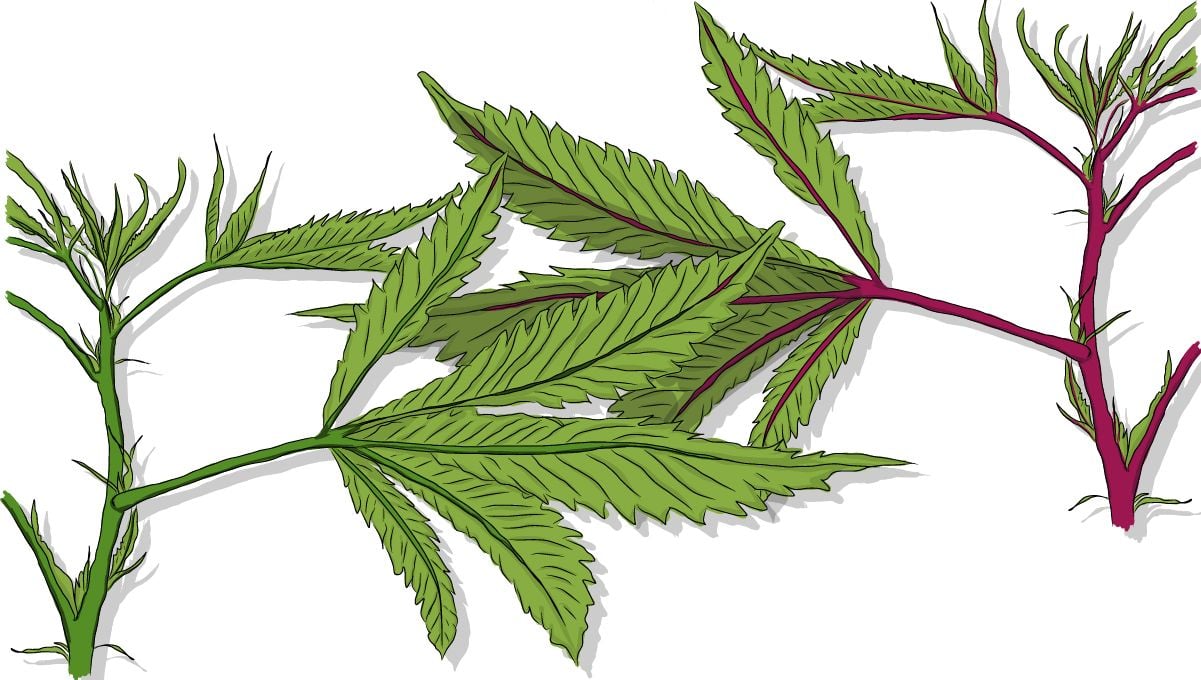
Moreover, you’ll know if the genetic profile of your plant has red or purple stems as a trait.
Observe Plant Growth and Health
If throughout the growing stages of your marijuana plants you notice the stem turning red or purple without any other signs of infestations or diseases. That’s why it’s important to keep a constant eye on your plants and to check their development.
Consult Experienced Growers
Sometimes it’s best to just talk to someone who’s much more experienced so you can get actual directions. So don’t hesitate to reach out to known growers, check out forums and to participate so you can get relevant answers that a label won’t give you.
10. Conclusion
Red or purple stems can be both a beautiful characteristic of cannabis strains, and a sign that something is wrong. If it’s in genetics, then you have nothing more to worry about. However, if you notice wilted and yellow leaves, mold or pests, then your colored stems might need some tending.
As long as you keep your growing room clean, you provide the right amount of nutrients and light, then you’ll be able to solve any types of deficiencies or pests infestations.








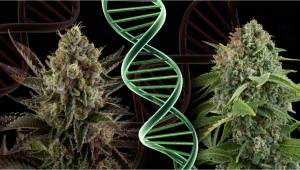
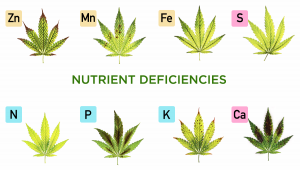
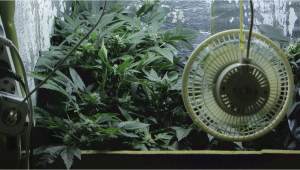

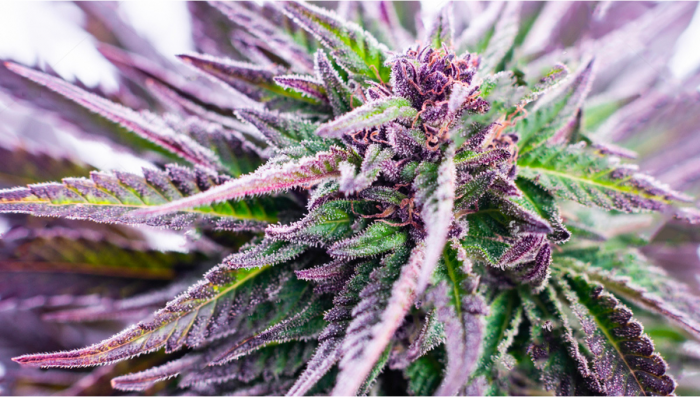
Comments